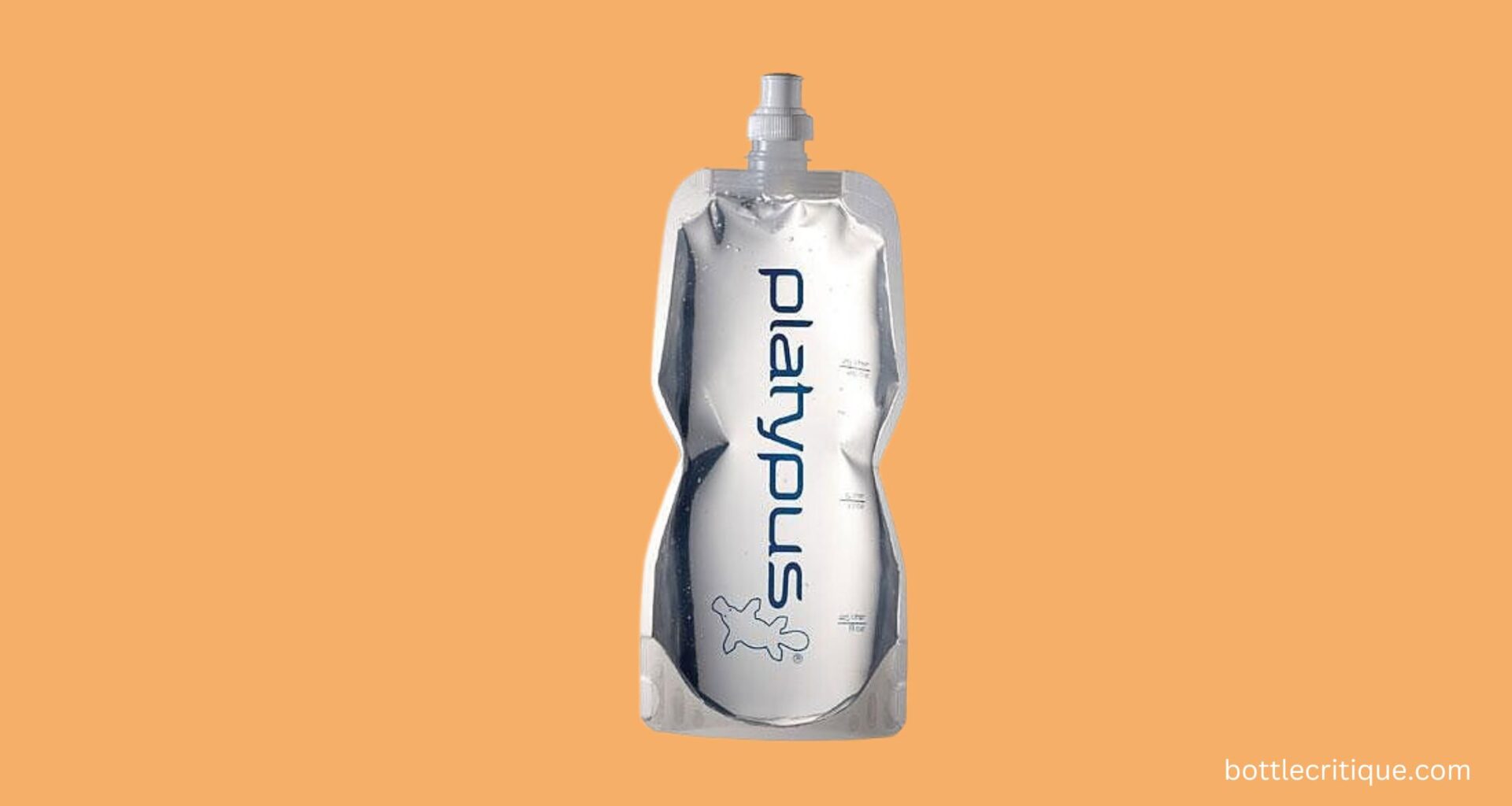Have you ever wondered how to properly clean your Platypus water bottle? Keeping your water bottle clean isn’t just a matter of aesthetics, it’s essential for your health too. This article will guide you through the step-by-step process of washing a Platypus water bottle. Follow these straightforward steps to ensure you’re sipping from a squeaky-clean and contaminant-free bottle every time. So, are you ready to give your Platypus water bottle the deep cleanse it deserves?
Why Cleaning Your Platypus Water Bottle is Important
Ever wondered why it’s essential to keep your Platypus water bottle clean? Here’s the deal: maintaining cleanliness isn’t just about aesthetics; it’s a matter of your health and safety. Besides, a clean water bottle ensures that the taste of your drinks remains pure and enjoyable.
1. Health and Safety
Unwashed water bottles can harbor bacteria, mold, and other harmful germs. These microorganisms can multiply rapidly, especially if the bottle is not dried out properly. Consuming water from a contaminated bottle can lead to various health issues, from mild discomfort to severe diseases.
2. Taste Preservation
Residue buildup from previous drinks or the growth of microbes can significantly affect the taste and odor of your water. Cleaning your Platypus water bottle regularly ensures that each sip you take is as refreshing and satisfying as it should be.
3. Prolonged Bottle Life
Regular cleaning can also extend the lifespan of your water bottle. Bacteria and other microbes can cause material degradation over time. By keeping your bottle clean, you can enjoy its use for a longer period.
So, how often should you clean your Platypus water bottle? Well, it’s best to clean it after every use. However, if this isn’t possible, aim to give it a thorough wash at least once a week.
Remember: The secret to enjoying your Platypus water bottle for a long time lies in proper and regular cleaning.
Materials Needed for Cleaning Your Platypus Water Bottle
Before you dive into the cleaning process of your Platypus water bottle, make sure you have the right tools on hand. Here’s what you need:
- Warm water: Warm water is going to be the main player in your cleaning battle. It’s perfect for loosening up stubborn grime.
- Mild dish soap: A gentle, non-abrasive dish soap will help cleanse the bottle without damaging its material.
- Soft bottle brush: This tool will help you scrub the inner walls of the bottle, ensuring you reach every nook and cranny.
- Vinegar or baking soda: For deeper cleaning and deodorizing, consider using a safe, natural cleaner like vinegar or baking soda.
- A clean towel: This will come in handy when it’s time to dry your bottle. Make sure it’s clean to avoid introducing new bacteria.
Got everything? Great! Now you’re all set for a successful cleaning session. Remember, using the correct materials not only ensures the longevity of your Platypus water bottle but also maintains the quality of the water you drink from it.
Step-by-Step Guide to Cleaning Your Platypus Water Bottle
Keeping your Platypus water bottle clean is essential for maintaining its durability and ensuring your health. But how exactly is it done? Don’t worry, we’ve got your back. Here’s a simple, step-by-step guide to help you clean your Platypus water bottle with ease.
What You’ll Need:
- A mild dish soap
- Warm water
- A soft bristle brush or a bottle brush
- Baking soda (optional)
Step 1: Rinse
Start by rinsing the bottle with warm water. This will help to remove any residue or dirt from the inner surface.
Step 2: Soap Up
Add a few drops of your mild dish soap to the bottle. Fill it about halfway with warm water. Now, it’s time to shake it up! Give it a good shake for around 20 seconds.
Step 3: Brush
Next, take your soft bristle brush or bottle brush and scrub the inside of the bottle. Be careful not to scratch the interior with a brush that’s too hard.
Step 4: Rinse Again
Rinse the bottle thoroughly with warm water. Make sure all the soap is out, we don’t want any soapy taste in your next drink, do we?
Step 5: Dry
Finally, let the bottle air dry completely. And voila, your Platypus water bottle is clean and ready for your next adventure!
Note: For a deeper clean, you can use a baking soda and water mixture instead of dish soap. Mix two tablespoons of baking soda with a small amount of warm water to form a paste, then apply this to the inside of the bottle and scrub. Rinse thoroughly.
Dealing with Tough Stains and Odors on Your Platypus Water Bottle
So you’ve got a stubborn stain or pesky odor that’s taken up residence in your Platypus water bottle? Not to worry! With a few simple steps, your bottle will be as good as new.
Steps to Remove Tough Stains
- Prepare a cleaning solution: Mix a solution of warm water and baking soda in a 1:1 ratio. This natural cleaner is effective and safe for your Platypus water bottle.
- Fill the bottle: Fill your water bottle with the prepared solution until it’s about halfway full.
- Shake it up: Securely close the lid, and give it a good shake. The agitation will help the baking soda solution work its magic on the stains.
- Let it sit: Allow the solution to sit in the bottle for at least 30 minutes. For really stubborn stains, an overnight soak may be necessary.
- Rinse thoroughly: After the soak, rinse out the bottle several times with warm water to ensure all the baking soda residue is gone.
Steps to Remove Odors
- Prepare a vinegar solution: Fill your Platypus water bottle halfway with white vinegar. It’s a fantastic natural deodorizer.
- Fill the rest with water: Fill the rest of the bottle with warm water.
- Let it sit: Allow the vinegar solution to sit in the bottle for about 15-20 minutes. This should neutralize any lingering smells.
- Rinse well: Rinse your bottle thoroughly with warm water to get rid of the vinegar smell. It may take a few rinses to completely eliminate the vinegar scent.
Remember, prevention is better than cure. Regular cleaning of your Platypus water bottle can help prevent stubborn stains and odors from forming in the first place. Keep your bottle clean, and it will serve you well for years to come.
Tips for Drying and Storing Your Platypus Water Bottle
Drying and storing your Platypus water bottle correctly is equally as important as proper washing. After all, proper care and maintenance extends the bottle’s lifespan and ensures it’s always ready for your next adventure. So, how do you go about this?
Drying Your Platypus Water Bottle
The first step after washing is to thoroughly dry your Platypus water bottle. Drying helps prevent the growth of bacteria and mold, guaranteeing a fresh and clean bottle for your next use.
- Drain the excess water: After washing, shake off the excess water from your bottle. Turn it upside down for a few minutes to let the remaining water drain out.
- Air dry: Leave the cap off and allow your Platypus water bottle to air dry. Position it in a well-ventilated area, away from direct sunlight. Make sure the bottle is fully dry before storing it.
Storing Your Platypus Water Bottle
Storage is the final step in caring for your Platypus water bottle. Here’s how to do it:
- Store it open: To prevent any chance of bacteria or mildew growth, always store your bottle with the cap off.
- Choose a cool, dry place: Keep your Platypus water bottle in a cool and dry area, away from direct sunlight or heat sources.
- Keep it upright: If possible, store your bottle in an upright position to avoid any possible leakage or condensation.
Note: Never store your Platypus water bottle while it’s still wet or damp. This could lead to the growth of mold or mildew, affecting both the taste and safety of your water.
By following these steps, you can ensure your Platypus water bottle stays clean, safe, and ready for your hydration needs. Remember, the key to a long-lasting water bottle is proper care and maintenance.
How Often Should You Clean Your Platypus Water Bottle?
Let’s get straight to the point: How often should you clean your Platypus water bottle? Well, it’s recommended to clean it after every use. Yes, you read that right. Every single time. This may seem excessive, but trust me, it’s for your own good.
Now you may ask, why is it so crucial to clean your Platypus water bottle after every use? Here’s why:
- Health: Your bottle can quickly become a breeding ground for bacteria and germs if not cleaned regularly. These can cause a range of health problems, including stomach upsets and infections.
- Taste: Ever noticed a peculiar taste when sipping from your bottle? That could be because of residue build-up. Regular cleaning helps maintain the fresh taste of your water.
- Longevity: Regular cleaning can extend the lifespan of your Platypus water bottle. Hard water deposits and other residues can damage the bottle over time.
So, it’s obvious that cleaning your bottle after every use is not just a suggestion, but a necessity. But what if you forget to clean it once in a while? Don’t stress. Just make sure to give it a thorough cleaning before your next use.
Remember, a clean Platypus water bottle is a happy Platypus water bottle!
Alternative Cleaning Methods for Your Platypus Water Bottle
Ever wondered if there’s another way to clean your Platypus water bottle? You’re in luck! There are a few alternative methods that can help you keep your bottle fresh and clean. Let’s explore them:
Using Denture Tablets
This method might seem a bit unusual, but it’s highly effective. Denture tablets are designed to clean and sanitize, making them perfect for water bottles. Here’s how to use them:
- Fill your Platypus water bottle halfway with warm water.
- Drop a denture tablet into the water.
- Screw the lid back on and shake the bottle to mix the solution.
- Let the bottle sit for about 15 minutes.
- Rinse thoroughly to ensure all the solution is out.
Vinegar and Baking Soda
Vinegar and baking soda are household staples and natural cleaning agents. Follow these steps:
- Step 1: Mix equal parts of white vinegar and water.
- Step 2: Add a teaspoon of baking soda.
- Step 3: Pour the mixture into your Platypus water bottle.
- Step 4: Let it sit for 15-20 minutes.
- Step 5: Rinse thoroughly.
Using a Bottle Brush
If you prefer a more hands-on approach, you can use a bottle brush. This method is straightforward and effective:
- Fill the bottle halfway with warm soapy water.
- Insert the brush and scrub the inner surface of the bottle.
- Rinse thoroughly.
So, ready to give these alternative cleaning methods a try? Remember, a clean Platypus water bottle ensures you stay hydrated in the healthiest way possible. Happy cleaning!
Avoiding Common Mistakes When Cleaning Your Platypus Water Bottle
When it comes to maintaining the cleanliness of your Platypus water bottle, certain mistakes can not only compromise the effectiveness of your cleaning but also potentially damage your bottle. It’s essential to know what these pitfalls are so you can avoid them.
1. Using Harsh Cleaning Agents
While you may be tempted to reach for the strongest cleaning products to ensure a thorough clean, this could lead to undesired effects. Products like bleach can degrade the material of your Platypus bottle, reducing its lifespan. They may also leave behind a residual taste or smell.
Stick to mild, non-abrasive cleaning agents like warm soapy water or baking soda for the best results.
2. Neglecting the Cap and Drinking Tube
It’s easy to focus solely on cleaning the body of the bottle and forgetting about the cap and drinking tube. These areas, however, tend to harbor bacteria and need just as much attention.
Make sure to disassemble the bottle fully and clean each part separately. A pipe cleaner or small brush can be useful for cleaning the drinking tube.
3. Incorrect Drying Practices
Improper drying of your Platypus water bottle can lead to the growth of mold and mildew. This is a common mistake, often made out of a hurry to use the bottle again.
- Avoid storing the bottle while it’s still damp inside.
- Ensure to air-dry it completely before storing it away.
By avoiding these common cleaning mistakes, you can keep your Platypus water bottle in top condition for longer. Remember, proper cleaning and care can significantly improve the lifespan and performance of your bottle.
The Benefits of Using a Platypus Water Bottle
Ever thought about the benefits of using a Platypus water bottle? There are several, and they might just persuade you to make the switch!
Environmentally Friendly
First and foremost, Platypus water bottles are reusable and durable. By using one, you’re reducing the amount of plastic waste that ends up in our environment. It’s a small step towards a greener and healthier planet.
Compact and Lightweight
Unlike traditional water bottles, Platypus models can be collapsed and folded when they’re not in use. This makes them incredibly lightweight and easy to carry around, whether you’re hiking, camping, or just running errands.
Safe and Healthy
Platypus water bottles are made of BPA-free materials. This means they don’t contain any harmful chemicals that could leach into your water, keeping your hydration pure and safe.
Easy to Clean
Lastly, these water bottles are pretty easy to clean. But, how to wash a Platypus water bottle correctly? That’s coming up next!
Keeping Your Platypus Water Bottle in Top Condition for Longer
Keeping your Platypus water bottle in top condition isn’t rocket science, it just requires a little care and attention. Here are some tips to maintain its pristine condition for longer and to ensure it continues serving you well.
Clean Regularly
Your Platypus water bottle is your hydration partner – so, wouldn’t you want it to be as clean as possible? Regular cleaning keeps it free from bacteria and unwanted odors. Here’s how to do it:
- Empty the water bottle: Pour out any remaining liquid and open the cap.
- Rinse with warm water: Swill warm water around inside the bottle for about a minute.
- Use a mild detergent: Add a drop of dish soap, close the cap, and shake vigorously.
- Scrub the interior: If possible, use a long-handled brush to scrub inside the bottle.
- Rinse thoroughly: Rinse the bottle until the water runs clear and there’s no soap left.
- Let it air dry: Leave the cap open and allow the bottle to air dry completely.
Store Properly
How you store your water bottle can greatly affect its longevity. Have you ever thought about that?
- Keep it dry: Always store your Platypus water bottle completely dry to avoid bacterial growth.
- Store it uncapped: Keeping the cap open allows for air circulation, preventing unwanted smells.
- Avoid direct sunlight: Sunlight can fade the bottle’s color and degrade its material over time.
Avoid Harsh Chemicals
When cleaning your Platypus water bottle, it’s best to stick to mild detergents. Strong chemicals can harm the bottle’s material and affect the taste of your water.
Note: Using a dishwasher to clean your Platypus water bottle is not recommended, as it can cause the bottle to warp or melt.
By following these simple steps, your Platypus water bottle will stay in peak condition, and you’ll always have fresh-tasting water on hand. Remember, your bottle works hard to keep you hydrated. It’s only fair you return the favor, right?






